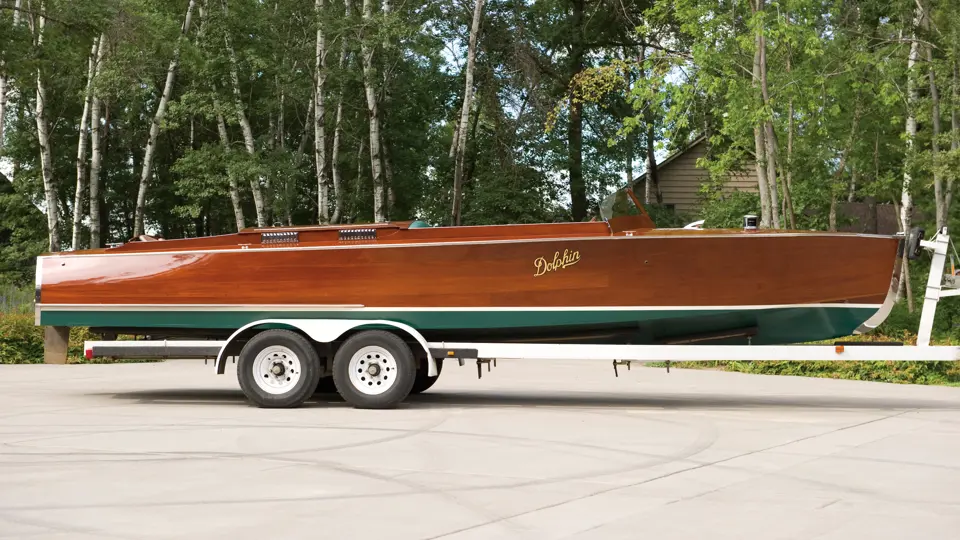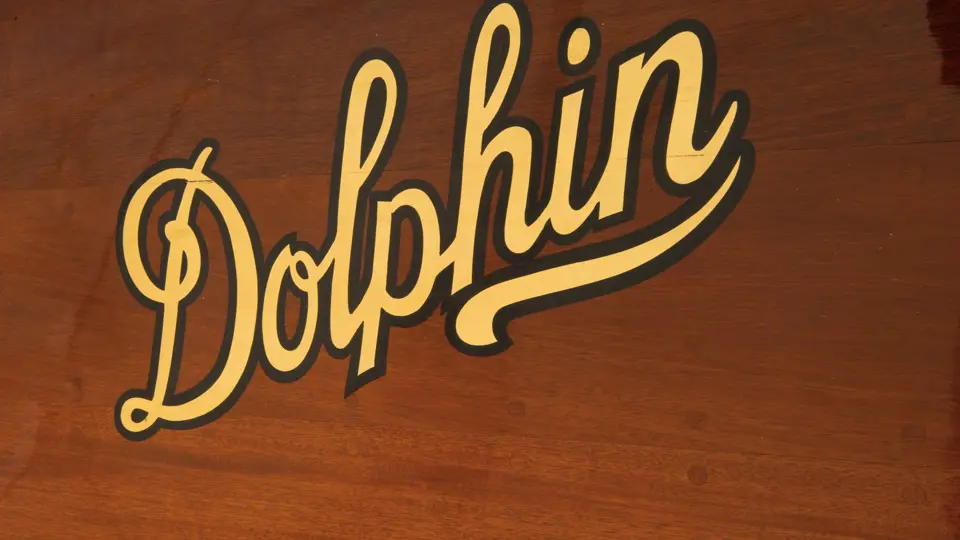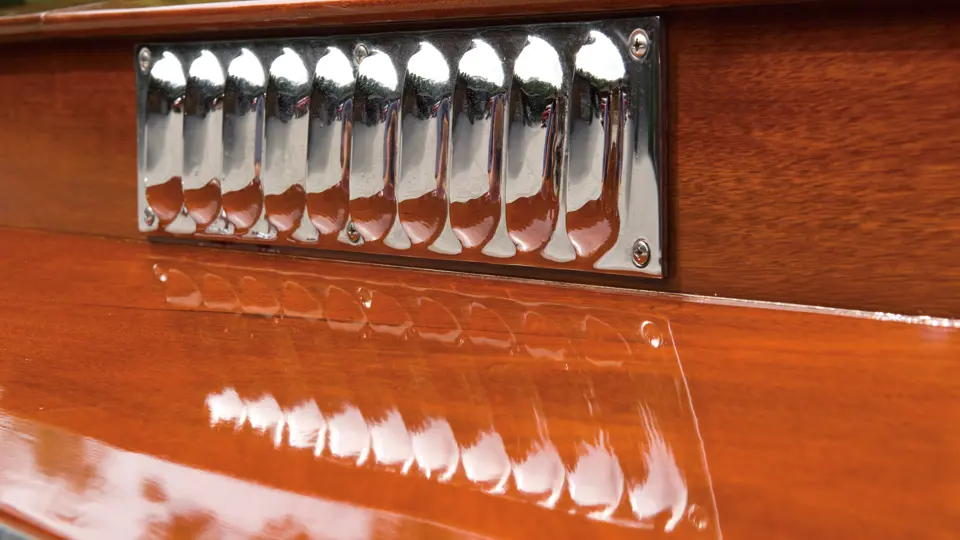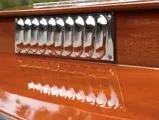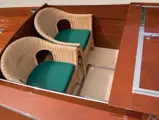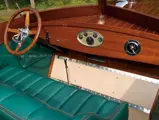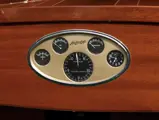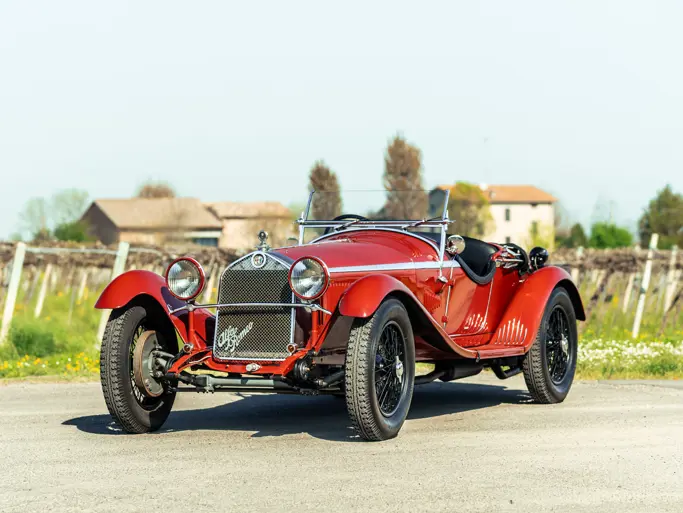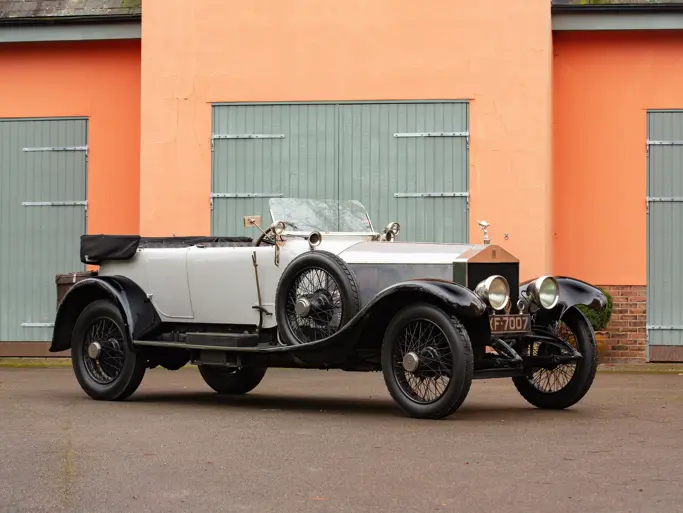127 hp, 331 cu. in. six-cylinder engine. Length: 26 ft.
• Keel-up restoration in 1999
• Original Scripps F-6 Junior Gold Cup engine
• Integral part of the roaring twenties
“Spend your play hours on the water in a Dolphin” – Hacker-Craft advertisement
“He who makes a beast of himself gets rid of the pain of being a man.” – Hunter S. Thompson
Born in Detroit, Michigan, in 1877, John Ludwig Hacker was to become one of the preeminent naval architects of the American 20th century. He began working as a bookkeeper for his father’s business. During this time, he attended night school and took a correspondence course in order to become an accredited marine designer. He was among the first designers to espouse the “planing” hull, realizing that in order to go faster, the hull of the boat would have to ride on top of the water, not plow through it.
In 1904, using his revolutionary V-hull design, Au Revoir became the fastest boat in the world at that time. Constantly building on his success, he designed six standard runabouts for the Belle Isle Boat and Engine Company in 1918. These boats became famous as the “Belle Isle Bear Cats” and launched Hacker to prominence. After establishing the Hacker Boat Company, the 22-foot and 26-foot Dolphin models were among his first production watercrafts.
Hacker’s ads said it best: “John L. Hacker has for years, been the most copied boat designer in America. Time after time his new features have been adopted by other companies, often hastily between races. Among the boat-wise of the land, the genius of John L. Hacker stands out as the most advanced expression in boat building and design. That’s why experienced yachtsmen prefer Hacker-Craft. In each Hacker-Craft, hidden things are as faithfully produced as are the details exposed to the eye. That is why, years after Hacker-Craft are bought, they can still be found faithfully performing. In your summer days on the water if you want to feel the consciousness of excellence, if you want to be envied by all, select a Hacker-Craft.”
This 26-foot Dolphin was treated to a complete, keel-up restoration in 1999, including extensive wood replacement. It is also equipped with a highly sought-after original Scripps F-6 Junior Gold Cup six-cylinder engine of 331 cubic inches, developing 127 horsepower at 2600 rpm. It’s somewhat unusual to see a 1920s boat with original power, as engines were often replaced along the way with newer, lighter, more powerful units. Note the diminutive wicker chairs in the aft cockpit, a common feature in 1920s boats. The Dolphin is a great example of the state of the boatbuilding art in the mid-1920s and is part of the fleet that put the roar in the roaring twenties!




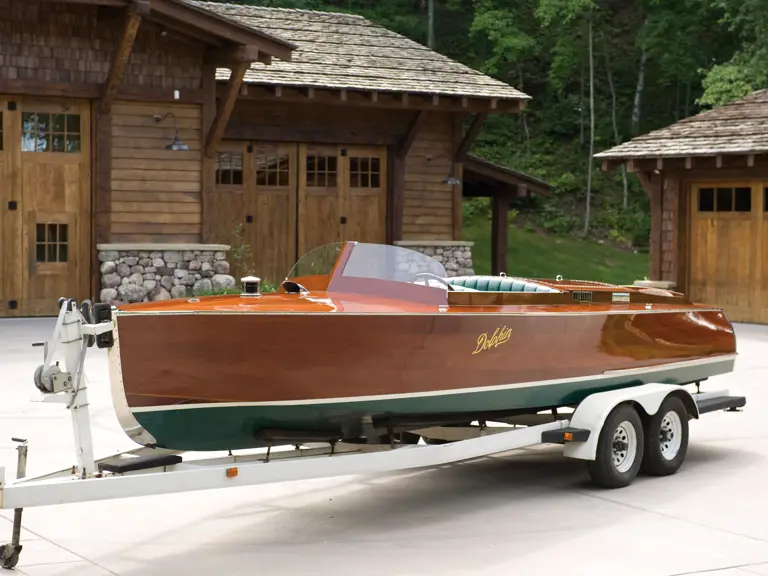
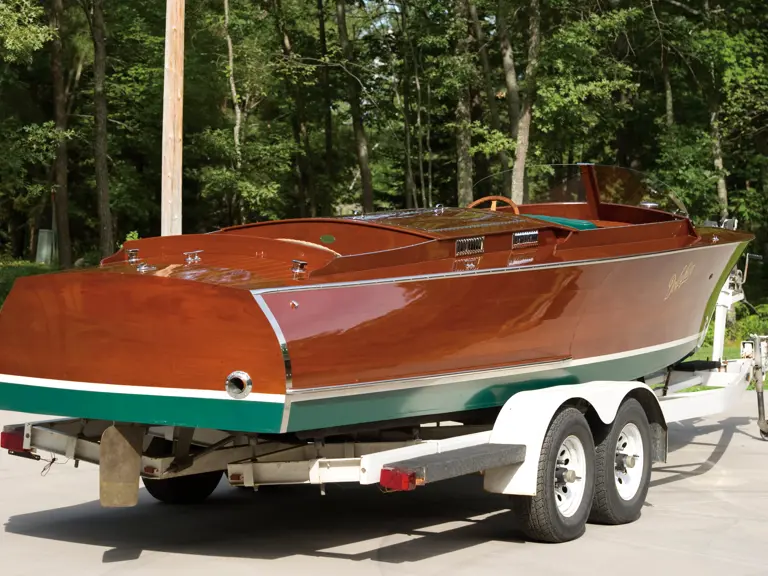
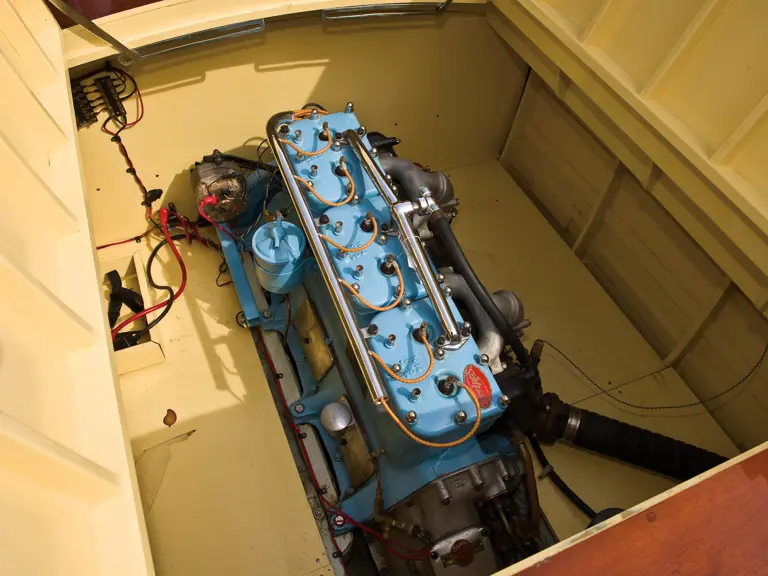
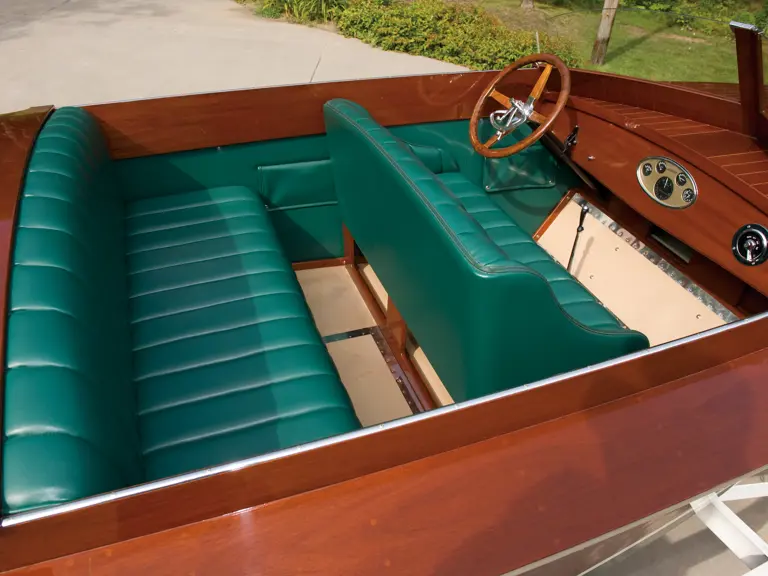
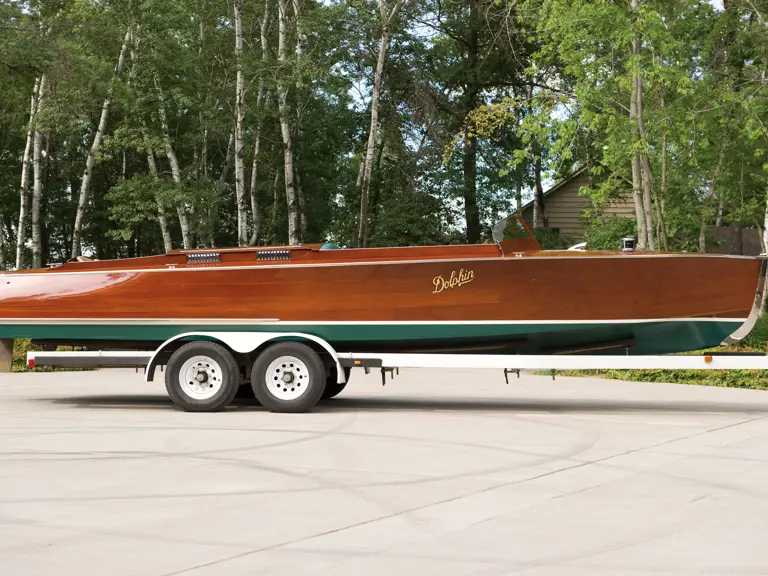
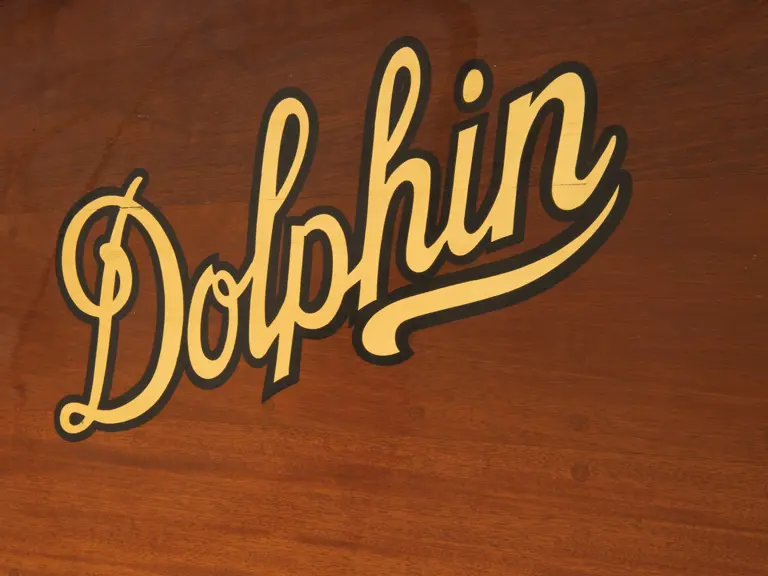
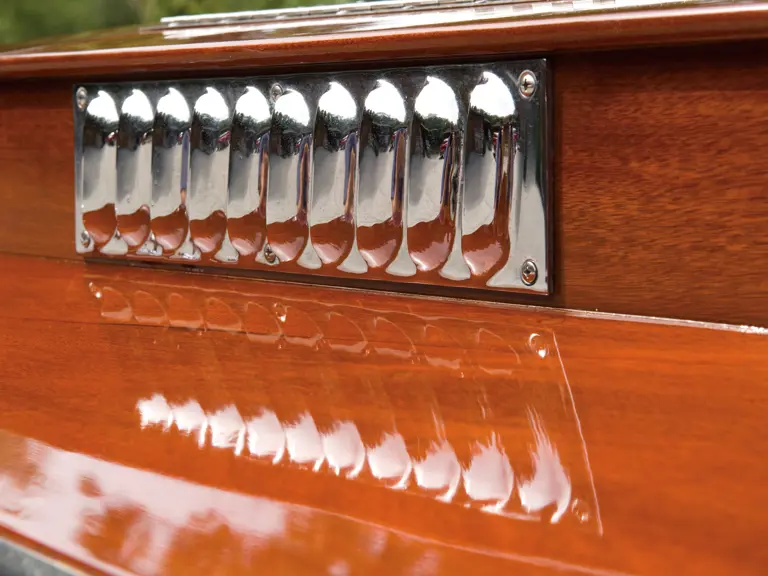

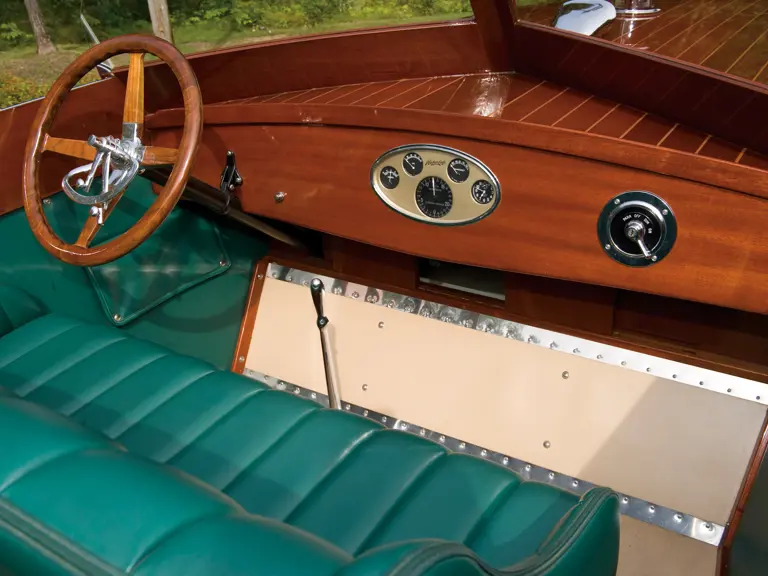
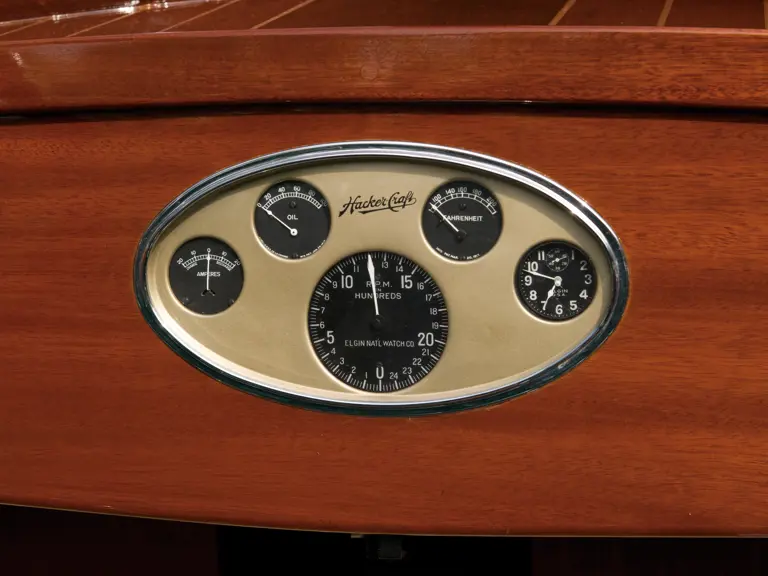

 | Hershey, Pennsylvania
| Hershey, Pennsylvania
